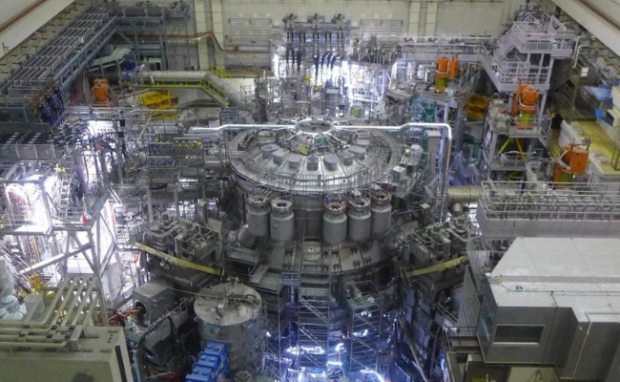China launches first-ever 4th-gen nuclear reactor
On December 6, 2023, China innovated nuclear power by launching the world’s first fourth-generation nuclear reactor. What sets it apart is that it cools using helium gas instead of water. As a result, Tsinghua University said, “It is the so-called inherently safe reactor,” and “the core will not melt.”
The world needs more efficient and sustainable energy sources as modern society pollutes them more and more, dangerously boosting global warming. Nuclear is one of the best options, but many are afraid of Fukushima-esque disasters. Fortunately, China’s latest reactor may put those fears to rest with its newer and safer systems.
This article will elaborate on China’s Shidaowan nuclear reactor. Later, I will discuss other nuclear energy innovations around the world.
How does the 4th-generation nuclear reactor work?
South China Morning Post says the Shidaowan nuclear reactor doesn’t use water cooling like others. Instead, it uses helium gas, offering an option to develop more inland nuclear facilities because they won’t need to be next to a water source.
The facility began construction in 2012. It features two 250-megawatt thermal reactors and a steam generator with an installed 200-megawatt capacity.
The Gen IV International Forum (GIF), an international cooperative framework of major nuclear nations, explains the goals of 4th-gen reactors. They aim to limit the hazardous waste, environmental impact, meltdown risk, and proliferation risks of nuclear energy.
Zhang Zuoyi, the Tsinghua University Institute of Nuclear and New Energy Technology dean said they can produce heat, power, and hydrogen that could help China and the world “become carbon neutral.”
The Shidaowan 4th-gen nuclear reactor will be able to produce hydrogen alongside electricity. Then, China could use that as fuel and designate it for various industrial applications.
One of its developers, China National Nuclear Corporation (CNNC), said, “It signifies that China has completed the world’s first commercially operational modular nuclear power plant with fourth-generation nuclear technology, marking the transition of fourth-generation nuclear technology from experiments to the commercial market.”
You may also like: Scientists develop self-healing concrete
Energy news website OilPrice shared a statement from Tsinghua University elaborating on the Shidaowan’s capabilities. “The tests confirmed that commercial-scale reactors could be cooled down naturally without emergency core cooling systems for the first time in the world. It is the so-called inherently safe reactor,” it said.
SCMP said the United States, Canada, and Japan are researching and designing other 4th-gen nuclear reactors. However, they have not yet begun construction.
The news outlet also says China has been increasing its nuclear capacity faster than other nations. However, we need more regulations, safeguards, and waste management to deploy fourth-generation reactors worldwide.
Other nuclear energy innovations

Another nuclear energy innovation occurred in Asia. Japan recently activated the world’s biggest nuclear reactor called JT-605A to “bring us closer to fusion energy.”
Most nuclear reactors use fission, meaning they make radioactive molecules collide with each other to generate energy. On the other hand, fusion reactors encourage hydrogen molecules to fuse into helium to release energy.
You may also like: Rare crystal forms from first-ever nuclear bomb test
Stars also use nuclear fusion, so fusion reactors could help scientists understand how these heavenly bodies work. The JT-60SA’s deputy project leader, Sam Davis, praised the initial operations as “a milestone for fusion history.”
“Fusion has the potential to become a key component for energy mix in the second half of this century,” he claimed. It’s the result of a collaboration between more than 500 scientists and engineers and more than 70 companies throughout Europe and Japan.”
ScienceAlert says fusion does not pose the risk of nuclear disasters, unlike fission. Moreover, nuclear fusion produces less radioactive waste than current power plants.
Conclusion
China recently launched the world’s first 4th-gen nuclear reactor. Multiple sources say it cools itself with helium gas instead of water.
Consequently, the Shidaowan facility’s core will not melt, so it’s safer than existing reactors. Aside from producing electricity, it generates hydrogen for fuel and other applications.
Further research and development could turn it into a viable option for other countries. Learn more about the latest digital tips and trends at Inquirer Tech.